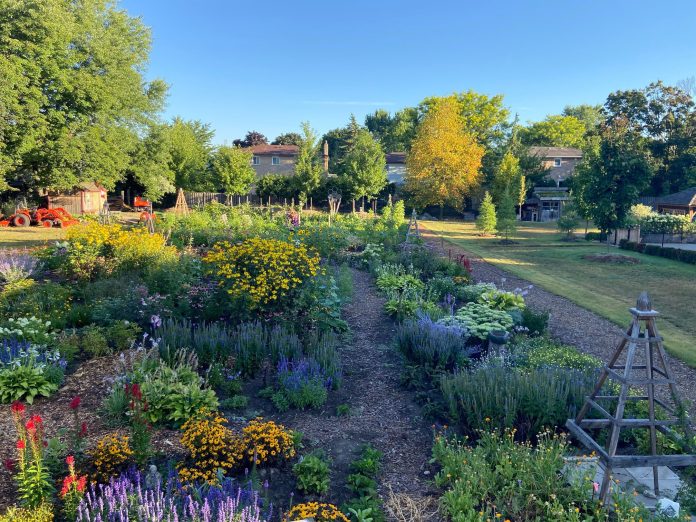
Another year of bizarre weather has climate change on the mind. Clearly, this is an all-hands-on-deck effort.
Whiz-bang technologies like carbon capture, electric cars, and plant-based meat substitutes grab headlines, but there is a whole category of solutions as old as time. They are referred to as “nature-based climate solutions”. These are loosely defined as working with, rather than against nature.
Nature-based climate solutions have countless add-on benefits which all relate to an improved natural environment, ranging from increased biodiversity to overall lower costs.
Gardeners can a lot to address climate change with nature-based solutions. Here are the top tips on our list:
- Plant native plants. Native plants originated here. They grew naturally, before the Europeans arrived about 500 years ago. They generally require less water, no winter protection, or insect and disease control. Perennials adjust to a warmer, drier climate by developing deeper root systems. They sequester more carbon into the soil. Native plants have the added benefit of supporting birds, insects, bees, and butterflies that coevolved with them, which increases biodiversity and resilience in the face of climate change. We recommend that you plant at least 70% of your garden in native species. https://nanps.org/ is a great resource for learning about plants native to North America.
- Plant densely. Mulch is a useful maintenance reducer in the gardening toolkit. However, think of living plants as a form of “green” mulch. They can do the heavy lifting in terms of sequestering carbon and supporting biodiversity. Fit as many in as possible in your garden space and they will naturally compete with weeds. Consider a native living ground cover such as barren strawberry (Waldsteinia fragarioides) or in a sunny, hot spot, broadleaf stone crop (Sedum spathulifolium).
- Plant a tree! The importance of trees cannot be overstated. Sometimes size really does matter, and a mature tree with its sprawling branches above ground and roots below ground simply make a greater impact on the climate than any other plant. A tree is of greatest value in the urban environment, where it can cool surrounding buildings and provide much-needed habitat for birds and insects, while improving air quality to the benefit of human health. The Canadian tree charity Trees for Life (of which Mark is a founding chair) estimates that planting 2 billion trees could remove 5,200,000,000 lbs of carbon dioxide from the atmosphere annually. https://www.treesforlife.ca/why-trees
- Stop fertilizing. David Wolfe, a professor of plant and soil ecology at Cornell University, found that for each pound of synthetic nitrogen fertilizer, 4 to 5 pounds of carbon dioxide are released (https://psci.princeton.edu/tips/2020/5/11/law-maintenance-and-climate-change). Instead use a non-organic fertilizer, spread one to two centimetres of compost to increase soil fertility either fall or spring.
- Focus on the soil. Soil stores carbon long-term. Basic soil structure is made up of clay, loam, sand, and organic matter which is alive with fungi, bacteria, and insects that dissolve minerals and mobilize nutrients throughout the soil to support plant life. Pesticides often kill these beneficial communities, where overwatering can also deprive them of necessary oxygen. Rototilling destroys soil structure and releases soil carbon and nitrogen into the atmosphere in the process. Soils should be fed with natural fertilizers such as compost and disturbed as little as possible. When the leaves fall from your neighbourhood trees, leave them on top of your garden soil, but rake them off your lawn.
- Go Electric. This is whiz-bang technology. Not creating emissions in the first place is key. If you already have a cordless electric drill, check to see if the manufacturer is making compatible outdoor implements such as lawnmowers and pruners which can use the rechargeable batteries you already have. Ben recently found this to be the case with his Makita drill battery, which can power a range of outdoor power equipment by the same brand, meaning fewer batteries to be made, and a lower price for new implements.
As gardeners and stewards, it feels great to be part of the nature-based solution.
Mark Cullen is an expert gardener, author, broadcaster, tree advocate, and Member of the Order of Canada. His son Ben is a fourth-generation urban gardener and graduate of University of Guelph and Dalhousie University in Halifax. Follow them at markcullen.com, @markcullengardening, and on Facebook.

